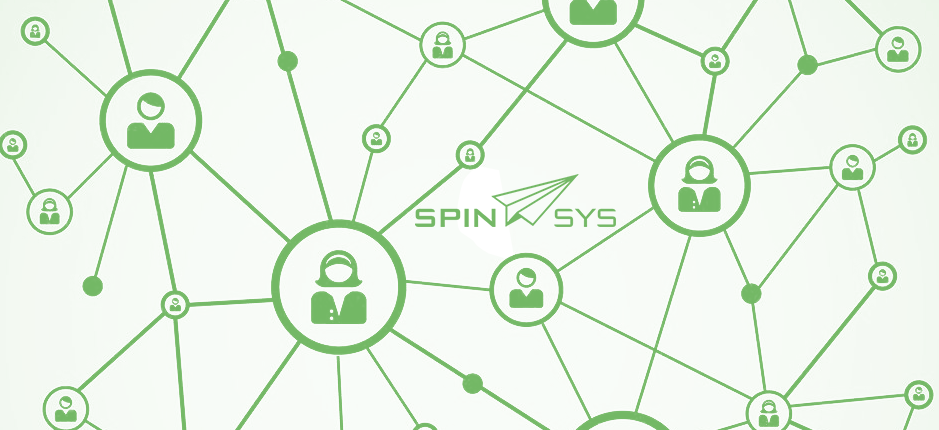
Chakib Jaber
Chief Technology Officer
SpinSys

Michael Peterson
Software Architect
SpinSys
Introduction
The health IT industry continues to evolve and information sharing has played a major role in helping improve the quality of care along with focuses on preventive care and population health. Health IT advances have been producing larger and larger amounts of of healthcare information that can be utilized by tools to share, process and analyze the data. With the rapid growth of Health IT and the number of vendors and solutions in the marketplace, interoperability, standardization, data storage, access controls and governance are industry challenges that continuously need to be addressed.
Blockchain technology, the technology used to secure and share financial transactions in cryptocurrency, has been creating a lot of industry buzz as a potential solution for interoperability and the secure sharing of healthcare data. Blockchain could provide a standards based approach that takes away the interdependencies of vendors and could enable individuals, healthcare providers and medical researchers to securely share electronic health data. Most blockchain research focuses on nation-wide use cases. However, little public research has been done on the implications blockchain would have with respect to the Military Health System (MHS).
SpinSys, with our products and solutions, has been supporting DoD Health IT systems for over a decade and currently supports over a billion health transactions daily. In addition, we have been involved in the implementation of a number of electronic health record (EHR), referral management and personal health record (PHR) solutions. We focus on sharing medical information among enterprise systems, including health information exchanges (HIE).
In this article we explore blockchain technology and its implications on the Military Health System as we leverage the research and information from several well-known entities who have published papers.
Overview of Blockchain Technology
Blockchain technology implementation is complex, but the concepts of secure sharing of information and leveraging of standards has attracted the industry to look into ways in which this approach can be leveraged to meet the challenges in the Health IT arena. The design consists of three main components: a distributed network, a shared ledger and digital transactions.
Distributed Network – Blockchain’s distributed network topology is a decentralized P2P architecture with nodes consisting of network participants. This offers layers of redundancy and reduces single points of failure.
Shared Ledger – Members in the distributed network record digital transactions into a shared ledger. To add transactions, members in the network run algorithms to evaluate and verify the proposed transaction. Since all members in the network have a complete copy of the blockchain no single member has the power to tamper or alter data.
Digital Transactions – Any type of information or digital asset can be stored in a blockchain, and the network implementing the blockchain defines the type of information contained in the transaction.
The blockchain is a distributed-ledger technology that enables payments and other transactions to be processed and stored in an entirely decentralized way—without banks or other intermediaries. Blockchain distributed-ledgers help keep its content resistant to tampering and modification. This distributed architecture of blockchain helps eliminate the chances of having a single point of failure and makes it more robust against hacking. The success of the increasingly notorious digital currency Bitcoin is due, in a large part, to its underlying decentralized, ledger architecture, the blockchain.
Governance, Privacy, Security and Scalability Considerations
Many interesting applications have been proposed for the blockchain architecture. They range from the already implemented cryptocurrencies to other person-to-person transactions such as those involving personal property (cars, motorcycles, boats, etc…). However, when the data contained in the ledger is not meant to be publicly accessible, there are many governance, privacy, security and scalability considerations that must be addressed. The Health IT industry has to adhere to HIPAA (Health Insurance Portability and Accountability Act of 1996) which is congressional legislation that provides data privacy and security provisions for safeguarding medical information. It creates governance requirements around data access especially as it relates to personally identifiable information (PII). Cryptocurrencies, such as Bitcoin, are based on transparency of data. Bitcoin provides access for anyone to see the blockchain and the contained balances and transactions for any Bitcoin address. Lack of data privacy and the absence of robust security make the Bitcoin public blockchain approach unsuitable for a healthcare blockchain that requires privacy and controlled, auditable access. Further considerations would need to be taken into account if the Military Health System were to participate in a national or global healthcare blockchain effort. These considerations include the ability for blockchain nodes to be able to determine record sharing access controls to accommodate the need-to-know nature of access on a case-by-case basis.
An area of research and development that SpinSys has been supporting is SMART on FHIR. You can read more about it in one of our articles: A Common Standards Approach To HIE. In general the Health IT industry has been investing a large amount of resources to achieve standardization. By creating and leveraging standards to increase interoperability, EHR and HIE vendors are working toward the same goal: standardizing patient data to improve care, reduce medical errors and lower operational costs. Blockchain could take these efforts beyond interface standardization. Its implementation would provide a standard way to not only share data, but also provides a means for data validation as well replication. However, blockchain standardization is currently in its infancy. Multiple vendors are currently competing in the cryptocurrency space. There are no widely agreed upon standards or implementations that would be suitable for use in healthcare at this time.
With a decentralized ledger, every member in the distributed network of the healthcare blockchain would have a copy of every health record for every participant. This could introduce interesting implications around the required infrastructure to become a network participant. Healthcare data can be dynamic and expansive, replicating all records to every member in the network could be bandwidth intensive and costly to store. The volume of medical data and the type of data that needs to be collected, both structured and unstructured, will require some thoughtful consideration in terms of both format and throughput. Some industry papers have proposed to store a pointer(index) for a given patient in the blockchain. Transactions in the blocks would contain a user’s unique identifier, an encrypted link to the health record and a timestamp for when the transaction was created. Our experience in developing and leveraging the index approach to a ledger adds additional dependencies on the connectivity and reliability of the original sources that are storing the medical data. If one link on the network is down, that part of the medical record is not accessible. The implemented approach must take into account reliability and geographical disparity in its design.
Additionally, proposed approaches for the healthcare blockchain discuss indexing and storing not only formal medical data, but also look at capturing data from mobile applications and wearable sensors. As we look at IoT, especially as it relates to medical and device data, advanced design considerations and configuration may need to be taken into account. Data volume and inconsideration of the data relevance may lead to an overwhelming amount of data that may not add value. If a device is monitoring your heart rate on a daily basis and reporting your heartbeat every millisecond, it may not be necessary to store every reading. We may only want to capture and report on wider intervals coupled with sampling techniques to detect variation. Additional considerations including algorithms, configuration and governance are needed as we look at IoT device generated data versus other healthcare data.
Conclusion
Blockchain is an exciting new approach to securely sharing data with many applications beyond cryptocurrency. The use of a distributed network, a shared ledger and digital transactions can be applied to many different use cases. However, before blockchain will be healthcare ready, there are governance, privacy, security and scalability considerations that will need to be taken into account. Furthermore, if the Military Health System is to participate, additional considerations will need to addressed.
References:
Alcorn, T.,Eagle,A.,& Sherbondy, E. Legitimizing Bitcoin: Policy Recommendations. MIT.


